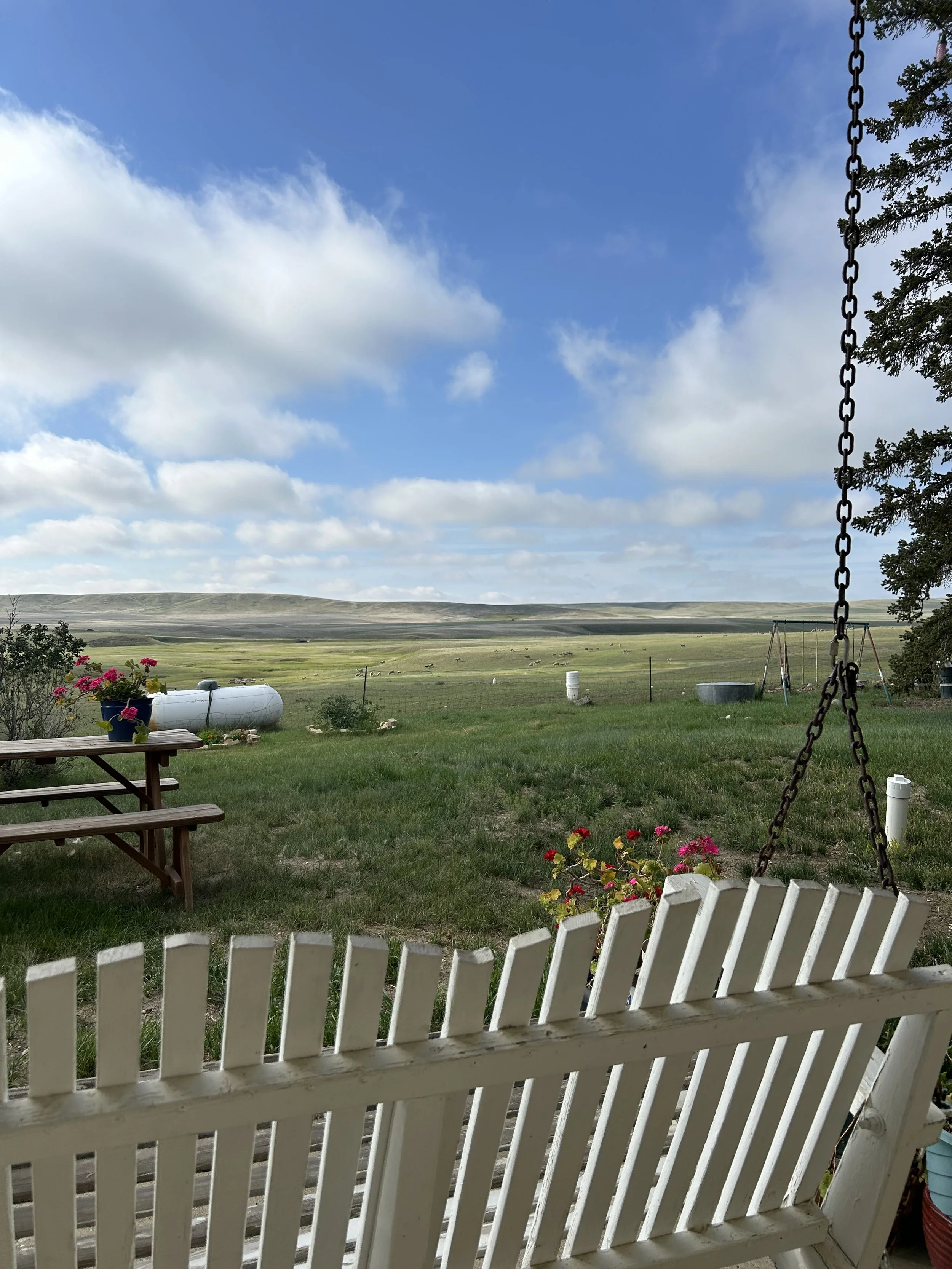Hope and the Future of Ag
The world of ranching is vast and tiny.
Within that world, through friends of friends of friends, a 30-something woman who is riding her horse across the West ended up spending the night at my ranch.
Meriwether Hardie is on a quest to visit people until the snow stops her, then write a book about hope and the future of farming and ranching.
First, we talked about drought.
Then we talked about aging ranchers and nobody to take over.
Then we talked about the deterioration of soil.
Then we talked about market monopolies.
During the years I was learning to ranch and writing about innovators, Meriwether adventured through South America on horseback and worked for several land conservation organizations.
So all of these conversations were familiar to both of us and none were particularly hopeful.
Until we sat on my porch swing to watch the evening colors change.
As the hues turned from the heat of yellow to warm golden tones and finally cool blues, Meriwether asked me what I would like people who live outside of agriculture to know.
My first answer was quick:
We all love our land. We all try our best.
I pointed to the unseen barriers to change.
Sometimes the barriers to doing things better are invisible to outsiders – seasonal schedules, dictated break-even prices that allow no room for even one mechanical breakdown, conservative bankers who won’t permit risky experiments, and policies that discourage innovation.
People who don’t work on the land often blame tradition for practices that might seem outdated.
They scoff at the adage of my daddy did it this way so I will, too.
That’s trite, even insulting.
Every farmer and rancher I’ve ever met weighs every strategy, new or old, carefully against environmental and financial conditions, then attempts to predict future markets, weather, supply and demand, potential Black Swan events and family needs.
Sometimes, the banker won’t allow a management innovation because the old way might not be best but it is tried and true.
Sometimes, policies with good intentions wreak havoc.
The Conservation Reserve Program saved soil from wind erosion but killed life in the soil and starved small towns.
We still live with the consequences of the 1972 Farm Bill that discouraged biologically diverse farms.
The next morning, we sorted cull ewes because one obvious underpinning of ranching is that the land can only feed so many mouths. That capacity varies with rain and fertility.
I wished people who eat the food we raise could understand this in their bones, the way farmers and ranchers understand this.
There’s only so much room for cattle, sheep, grizzlies, bluebirds and humans on this earth.
Right or wrong, the more space humans use, the less there is for others.
Then we talked about possible solutions to the laundry list of challenges in agriculture.
How to buy land: Start by renting pasture, buying an acre, trading it for more and then more.
How to get experience: Work for pennies first because that is all that your lack of knowledge is worth.
How to avoid allowing fear to sabotage the goal of operating a farm or ranch: Admit the challenges of ranching are scary. If you love it, pull up your big girl panties and do it anyway.
How to move away from harmful practices: Experiment small and over time.
My final wish for understanding was the joy I feel from attempting to juggle all of the systems that have to fit together – engines, horses, transmissions, biology, cattle, water, sheep, markets, policy, and finance.
Meriwether wants to hear from you, too, so if you spot her riding her mustang and leading her pack horse, don’t hesitate to visit.
You won’t regret it.
